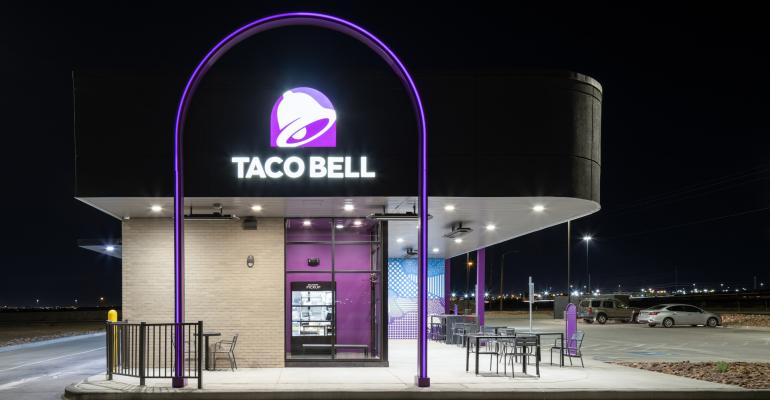Did Taco Bell just get even more bullish on its domestic development plans? In early 2021, the company shared its goal of having 10,000 restaurants open globally this decade. Today, the company shared a mid-2023 update, noting that it is “on track to operate 10,000 U.S.-based restaurants in the coming years.”
This is an interesting, albeit subtle, adjustment as Taco Bell is a major contributor to parent company Yum Brands’ staggering development cadence, and it could mean way more than 10,000 restaurants systemwide when factoring in its international pace. (Yum, by the way, just raised its long-term growth algorithm).
For context, there are currently over 7,200 Taco Bell locations and the company has experienced steady growth throughout the past several years under CEO Mark King’s leadership, including reaching a 1,000-unit international milestone in 2022. On the domestic side, Yum CEO David Gibbs recently said Taco Bell exited 2022 with record site registrations for new units.
As the brand barrels toward its goal, it has introduced an iteration of its digital-forward Go Mobile design, first introduced in 2020 in response to changing consumer behaviors. The company recently opened two of those iterated models – one in El Paso, Texas, and one in Columbus, Georgia – noting that elements of this restaurant design will be incorporated into future builds. Those elements include a walk-up window for both digital and third-party orders, dedicated parking for mobile and delivery orders, and grab-and-go shelves. There is no indoor dining area.
Notably, according to the company, the concept was created to ease drive-thru bottlenecks – which has been an industry-wide challenge as volumes increase in the channel – and has even led to the denial of permits in some markets for some brands. Finding a solution here is also one of the drivers behind Chick-fil-A’s new drive-thru concept test, for example.
Taco Bell’s Go Mobile format is also much smaller than a traditional restaurant, at 1,600 square feet, which is more cost effective and presents more real estate opportunities. These benefits have been identified by several major QSR brands introducing smaller, digital-forward concepts, including most recently McDonald’s.
The Go Mobile iteration comes as Yum’s digital sales exceed 45%. Executives have made it clear they want to get to 100% in digital sales eventually. That said, the Go Mobile concept is part of a bigger portfolio of assets the brand is focusing on. The company shared it is on track to reach its 10,000-unit goal “by leveraging a variety of asset types,” including Cantinas. The Cantina concept was first introduced in 2015 in California by franchisee Diversified Restaurant Group and there are now about 50 such restaurants in more than a dozen states. The company plans to add “multiple” new Cantina locations, including in Indianapolis and Los Angeles, by the end of this year.
Contact Alicia Kelso at [email protected]





